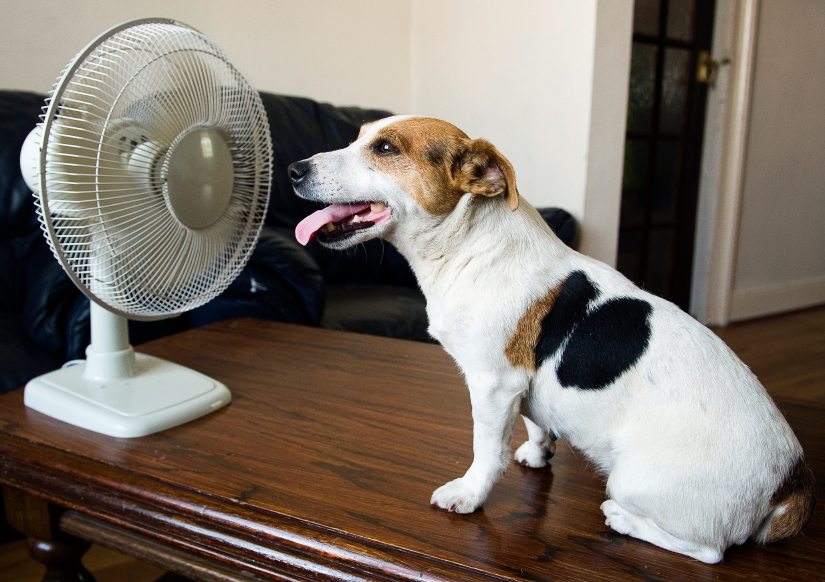WHAT IS IT?
Elevated body temperature >41 C (106 F) and increased respiratory effort,without signs of infection or inflammation.
Normal body temperature for a dog is 38.0 – 39.0 C (100.4 – 102.2 F)
HOW DOES IT HAPPEN?
Heat dissipating mechanisms (evaporation from the surface of the tongue and panting) cannot keep pace with the dog’s increasing body temperature.
WHY DOES IT HAPPEN?
There are a number of factors which contribute to heat stroke. The most obvious is very high temperatures and humidity. Combining these kinds of temperatures with exercise, especially in direct sun, can lead to heat stroke. Any breed can suffer heat stroke under warm conditions and over-exertion. Certain breed types, however, are more prone due to their respiratory anatomy. Any breed with a “pushed-in-nose” anatomy is susceptible (good examples are Pugs, British Bulldogs and Boxers). Other breeds may have narrow airways and/or a muscular oral cavity (Staffordshire, Pitbulls, Bull Terriers) which can significantly decrease air flow. Older dogs may have medical problems which can reduce the efficiency of their cooling effort. Once the dog starts to panic, and breathing becomes more forced, the mucous membranes become swollen and saliva thickens, worsening the situation. Eventually body temperature starts to rise well beyond the high end of normal
IS IT SERIOUS?
Yes, it can be life threatening. The goal is to cool them quickly. A combination of wetting/submerging the dog in SHALLOW cool water (or using soaking-wet towels) and fans to increase evaporative cooling is often employed. It is important NOT TO USE ICE as this may cause constriction of blood vessels in the skin, which will then decrease the efficiency of the cooling process. If the dog is in very rough shape, then it will need to be attended to by a veterinarian, as intravenous fluids and shock medication may need to be given, and more aggressive cooling methods may be required.
HOW TO PREVENT IT?
Common sense goes a long way with heat stroke. Having an older dog, those with respiratory disease or having a breed with anatomy as mentioned above should make the owner consider walking the dog at cooler times of the day, (dusk and dawn) and utilize air conditioning as much as possible. If the dog is outside, provide shade and use a kiddie-pool with a little water in it to provide a heat sink for the dog (again, in the shade). Access to fresh water for drinking should always be provided. If signs of heat stroke/distress develop then immediate action should be taken, and the dog brought to the veterinarian for a check-over.
by Dr. Stephen Longridge




